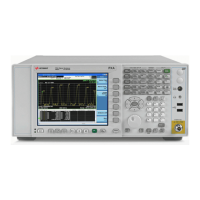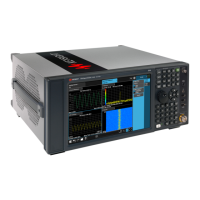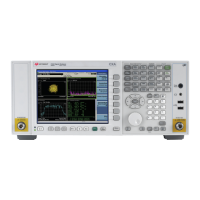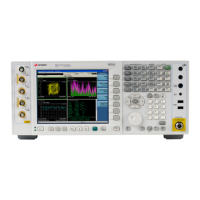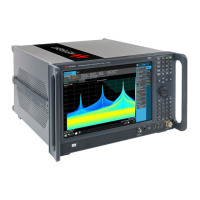219
Concepts
Spectrum Emission Mask Measurement Concepts
Spectrum Emission Mask Measurement Concepts
Purpose
The Spectrum Emission Mask measurement includes the in-band and out-of-band
spurious emissions. As it applies to W-CDMA (3GPP), this is the power contained in
a specified frequency bandwidth at certain offsets relative to the total carrier power.
It may also be expressed as a ratio of power spectral densities between the carrier
and the specified offset frequency band.
This spectrum emission mask measurement is a composite measurement of
out-of-channel emissions, combining both in-band and out-of-band specifications. It
provides useful figures-of-merit for the spectral regrowth and emissions produced by
components and circuit blocks, without the rigor of performing a full spectrum
emissions mask measurement.
Measurement method
The spectrum emission mask measurement measures spurious signal levels in up to
five pairs of offset/region frequencies and relates them to the carrier power. The
reference channel integration bandwidth method is used to measure the carrier
channel power and offset/region powers. When Offset is selected, spectrum
emission mask measurements are made, relative to the carrier channel frequency
bandwidth. When Region is selected, spurious emission absolute measurements are
made, set by specifying start and stop RF frequencies. The upper frequency range
limit is 3.678 GHz.
This integration bandwidth method is used to perform a data acquisition. In this
process, the reference channel integration bandwidth (Meas BW) is analyzed using
the automatically defined resolution bandwidth (Res BW), which is much narrower
than the channel bandwidth. The measurement computes an average power of the
channel or offset/region over a specified number of data acquisitions, automatically
compensating for resolution bandwidth and noise bandwidth.
This measurement requires the user to specify the measurement bandwidths of
carrier channel and each of the offset/region frequency pairs up to 5. Each pair may
be defined with unique measurement bandwidths. The results are displayed both as
relative power in dBc, and as absolute power in dBm.
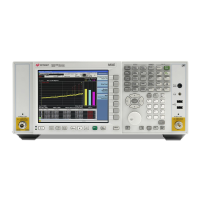
